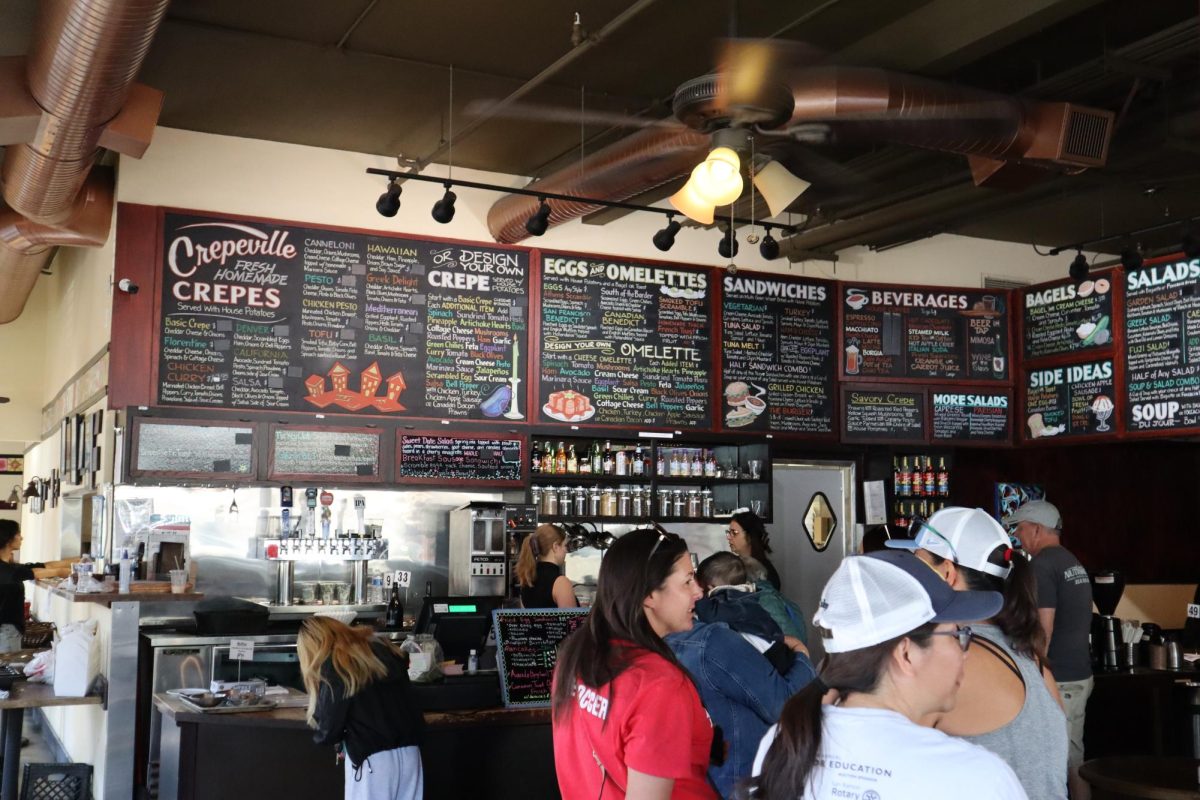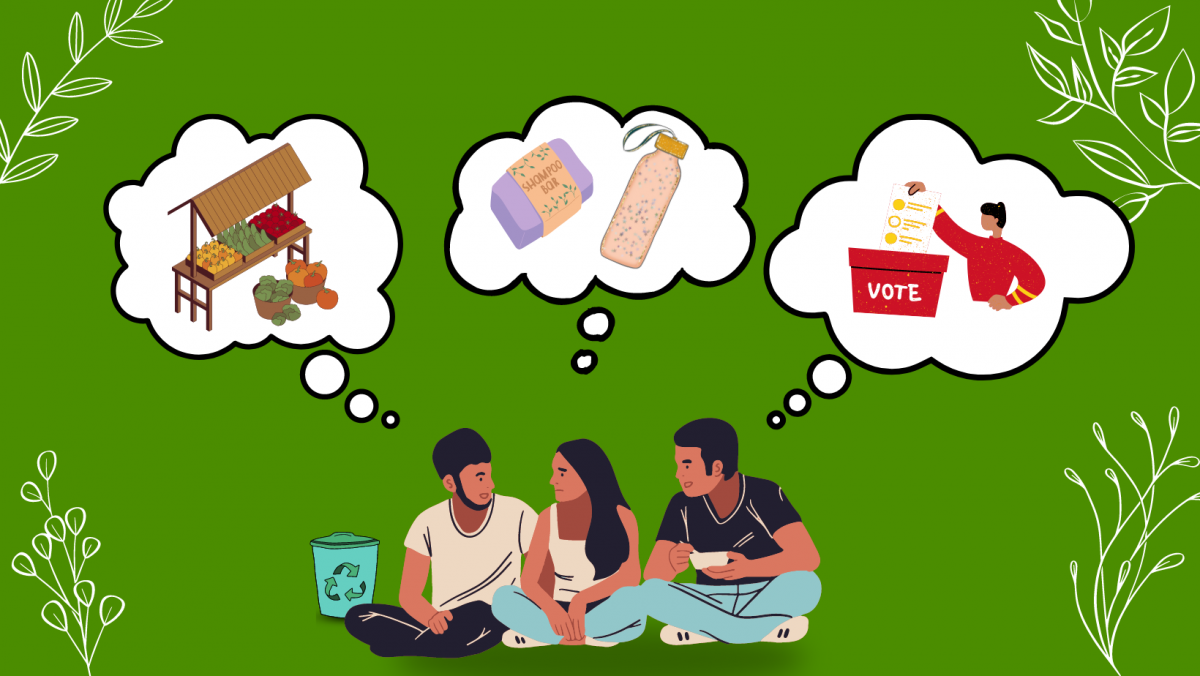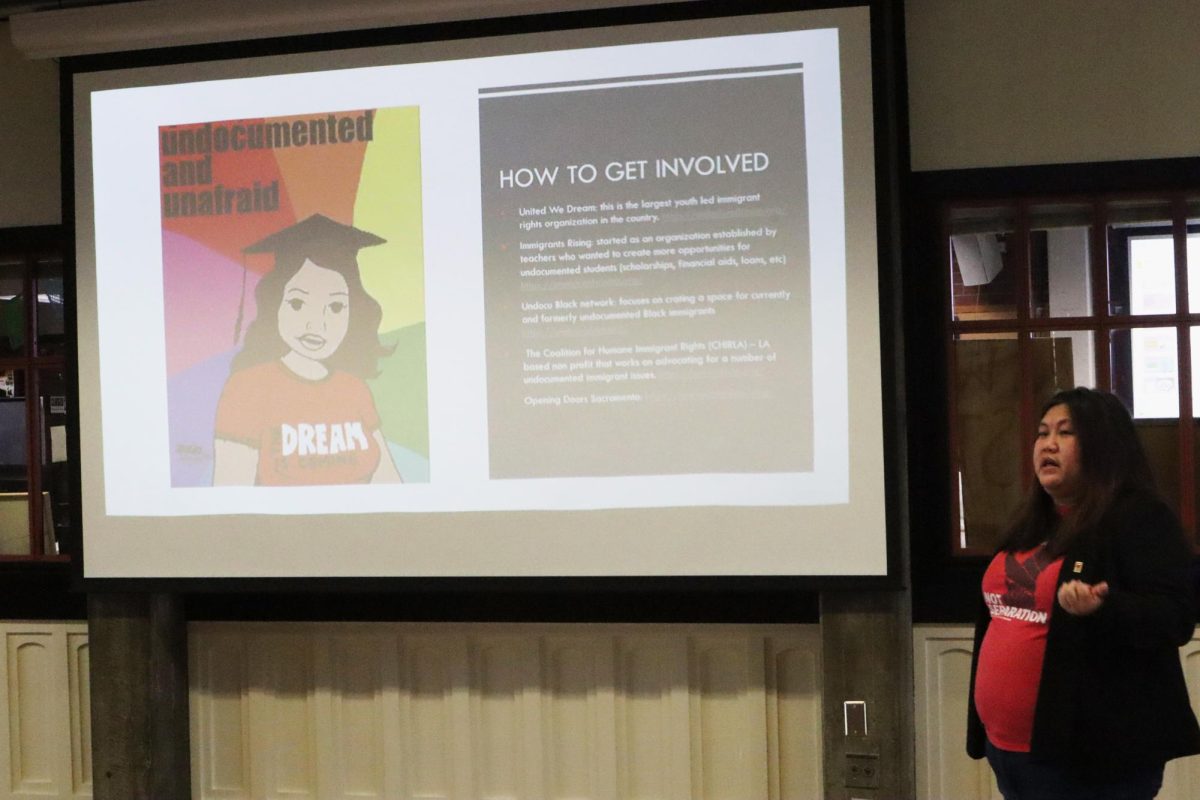It can feel difficult, as a college student, to live a sustainable lifestyle.
We are constantly on-the-go, with convenient, take-out foods tempting us left and right in their shiny, single-use packaging. We check Twitter in between classes, glancing at headlines like “It’s now or never to reverse climate change” or, “Humans are decimating wildlife,” while we watch policies stall in gridlock. In the summertime, we check local air quality before heading outside, in case drought-fueled megafires make the air dangerous to breathe.
Feeling stressed or despaired about the present state of the environment is often called eco-distress or eco-anxiety, and studies show it is on the rise, particularly among young people with 70% of Americans age 18-34 worried about global warming or climate change. Without a doubt, the burden of caring about the environment has been unfairly cast onto the individual as opposed to the industries responsible for the majority of the problem. However, many people find that taking the small actions that they can helps alleviate some of the stress, in addition to making a small, positive contribution.
There are many actions you can take, big and small, but in honor of City College’s Earth Day celebrations this month, we wanted to focus on simple, student-friendly tips, no electric vehicle required.
1. Shop at farmer’s markets
Getting your daily dose of fruits and veggies from a local farmer’s market is an easy way to reduce your carbon footprint while eating healthy. The industrial food supply chain is massive and full of inefficiencies. Buying directly from a farmer in your community cuts out lengthy stays in refrigerated storage and up to thousands of miles of fossil-fueled transportation. It is estimated that the average meal in the United States traveled 1,500 miles from farm to plant.
Luckily, we live in the farm-to-fork capital of the world, and there are literally dozens of farmers markets to choose from around the Sacramento area. As a student, you may qualify for CalFresh benefits which are now accepted at many markets around town.
2. Use bar soap
It may seem obvious (and that’s kind of the point) but using bar soap is such an easy way to reduce your plastic consumption. Liquid soap needs to be housed in plastic bottles that are more energy intensive to produce than the thin wrappers that encase bars of soap. Additionally, liquid soap is heavier and bulkier than bar soap, meaning its carbon costs in shipping and storage are higher. There are many brands offering a variety of hygiene products in bar-form today, from body wash, shampoo, conditioner, to even bar lotions and fragrances.
The bar turning into a blob of sludge in your shower is totally a valid concern, but if you get a reusable, vented tray, your bar will stay high and dry for the entirety of its life.
3. Practice meatless Mondays
Global meat production is a huge emitter of greenhouse gasses, particularly methane, a greenhouse gas with more than 80 times more warming power than carbon dioxide.
It is not practical or realistic to expect the entire world to go vegetarian or vegan, but it isn’t necessary either — many people reducing their meat consumption by a small amount would still have a great impact. According to the University of Colorado, you could reduce your carbon footprint by as much as 8 pounds each week just by eating plant-based on Mondays only. In addition to benefiting the planet, reducing your meat intake encourages you to add more fruits and veggies to your diet, which means you’ll increase your fiber and nutrients intake.
Try swapping beans or lentils for where you would normally add meat in a recipe or treat yo’ self and use Mondays as an excuse to check out a local plant-based restaurant like Bambi Vegan Tacos or Himalaya Vegan & Organic Restaurant.
4. Dispose of unused medication properly at a collection site
Flushing unused medications down the drain can contaminate water supplies affecting everything downstream, from fish to mollusks to people. But that doesn’t mean you should throw medication away either as it can be dangerous for others to find. The best option is to take leftover meds to a collection site where they can be chemically neutralized and disposed of in a safe and secure way.
Use this tool to search for a safe disposal location near you or ask your pharmacy or doctor’s office.
5. Actually ditch disposable water bottles
Without a doubt, there are places in California and beyond where it is not safe to drink the tap water, especially in under-resourced areas. But convenience culture and clever marketing propelled bottled water everywhere, even in places where tap water is perfectly safe to consume, if not healthier. Bottled water has been found to have about 50% more microplastics than municipal water and one report found that more than half of bottled water sold in the U.S. is from municipal sources, so you might simply be paying a premium for someone else’s tap water.
You can and should check the safety of your tap water by finding your local Consumer Confidence Report. If you still feel like you want filtered water or prefer the taste, get a home pitcher that you can refill or a filter nozzle that installs directly onto the tap for filtered water on demand. Your wallet, your health and your planet will thank you.
6. Shop second-hand
It is a no-brainer that buying something used is more environmentally friendly than buying something new, and clothes and furniture are no exceptions. The fast-fashion industry is booming and it sucks up a gigantic amount of resources each year, including water, land and fossil fuels. According to the United Nations, the fashion industry is responsible for 2-8% of global carbon emissions, and textile dyeing alone is the second largest polluter of water globally.
Buying used keeps things out of landfills and reduces demand for new items. Not to mention many thrift stores give back to their communities through job trainings, safe houses or donating their profits.
Most items are perfectly safe to buy thrifted, but there are some common sense items that are best bought new, such as undergarments and swimsuits. If you’re concerned about germs or pests when buying used, WebMD has a helpful guide for shopping used safely.
7. Vote for officials that support science-backed policies
Climate change, biodiversity loss and other environmental issues are complex, daunting problems that will not be solved by individuals; it will take systemic change. That is why putting pressure on elected officials to actually make progress on these issues is imperative.
Unsure of who to support? Many well-respected, conservation nonprofits and advocacy groups endorse candidates each election cycle to help constituents sift through the noise. Some suggestions to start with are the Natural Resource Defense Council Action Fund, California Environmental Voters, and the Sierra Club California.


























